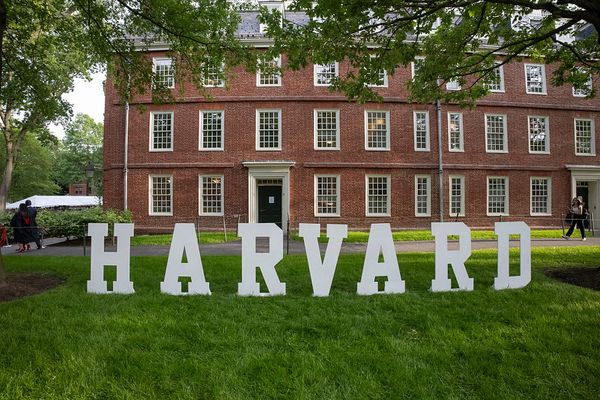
In around four years’ time, possibly a little longer, the last carcasses will be loaded off refrigerated trucks, as they always are, shortly before midnight. Seven hours later, as rueful traders head off for their traditional dawn pint of Guinness one final time, Smithfield Market will close its doors for good. A daily London ritual keeping the capital supplied with beef, pork, poultry and lamb since the 10th century will be no more.
The City of London Corporation has been itching to move Smithfield’s traders on — just as drovers once herded cattle down the “hollow way” of north London — for some years. As long ago as 2018, the corporation snapped up the former Barking Reach power station site armed with plans to turn it into an integrated modern food market, not just for Smithfield, but for Billingsgate and Spitalfields too.
That grandiose scheme is now in tatters, a victim, it seems, of the spiralling costs that have bedevilled all major construction projects since the triple whammy of Brexit, the pandemic and the energy crisis.
What has come as a shock, though, is that there is no plan B. In a bald statement this week the corporation’s Court of Common Council — the City seems happy to keep its ancient titles if not its ancient markets — simply said it had decided to “end its interest in co-locating the wholesale food markets of Smithfield and Billingsgate to a new site at Dagenham Dock”.
A golden goodbye
Perhaps surprisingly there was no immediate howl of protest from traders left in the dark about an uncertain future. That could be because the corporation has allocated a reported £300 million to enable traders to “identify suitable new sites” and “help them relocate to new premises”.
Note the use of the plural — “sites”. The corporation has no intention of doing “another Dagenham” and going through the long slog of identifying, buying and building out a new integrated market successor to Smithfield.
Instead, the individual traders will be left to find their own new premises. If they want them. The market, as London has known and loved it for centuries with all the cluster advantages that a single site brings, will be broken up and scattered to the M25 fringes of the capital. Some traders will no doubt grasp the opportunity to take a well deserved retirement on the back of the corporation’s largesse.
So if the market is to leave, what does that mean for the splendid 1860s Sir Horace Jones designed temples of ironwork left behind? One thing is for sure. As Grade II listed buildings, they cannot be demolished to make way for yet another City office block. We do not know what will happen to the site, although the corporation published some emerging thinking in 2020 that provides some clues. Those “first concept designs” envisage “an inclusive place for all Londoners” with “education and training at its heart, alongside a mixture of new cultural and entertainment spaces.”
One suggestion is that a hall where white coated bummarees — as porters are known at Smithfield — still lug around prime cuts of meat could one day house a sound-proofed multi-media entertainment space for local performances and cultural acts.
Don’t copy the French
The public and the media were banned from the meeting that sealed Smithfield’s fate
The corporation’s latest view on the future of the meat market has not been disclosed; indeed the entire process has been far from a shining example of municipal transparency. The public and media representatives were banned from Tuesday afternoon’s fateful Court of Common Council meeting that sealed Smithfield’s fate, while the official documents that guided their decision have not been published.
The corporation wants Smithfield to become a key element of its plans for a City “culture mile” stretching from Farringdon to Moorgate. A market where bloodstained butchers noisily turn carcasses into legs, shoulders and loins for the plates of London does not fit into that vision. Whichever way the corporation turns, it must not repeat the mistakes made by the authorities in Paris half a century ago. Its central food market, Les Halles, was almost as venerable as Smithfield, starting in the 11th century. Its glass and cast iron pavilions were closed and mostly demolished in 1973 in what was described as “one of the worst acts of urban vandalism of the century”.
Les Halles was replaced with a largely subterranean office and shopping centre opened by Mayor of Paris Jacques Chirac in 1979. It quickly became known as one of the most depressing places in the City of Light, a soulless concrete magnet for drug dealing. Even today elderly Parisians sigh with nostalgia at the loss of their vibrant market, where porters would warm their hands on steaming bowls of soupe d’oignon gratinée on frosty mornings.
While there is no suggestion that the corporation would follow Paris’s dismal example, perhaps there is a lesson to learn.
Is there a third way, an option that secures some form of viable market presence in central London, maybe on a reduced scale? The meat market is devoid of activity during the day, the halls standing empty and shuttered while the City throbs around it. Is there not scope for animating the area by day through the creation of retail units, butchers even, that could serve the hordes of visitors expected next door at the new London Museum and the other attractions of the corporation’s culture mile, as well as the thousands of local office workers? Part of London’s enormous strength is the way it blends history with modernity in a way that monumental Paris has not and upstart New York cannot. Anyway there is still much to play for. The market cannot be closed until a private bill passes all its parliamentary stages, a process that could take three years. As with any piece of legislation it will require royal assent.
And who knows, perhaps the King, a well known supporter of tradition and artisan food businesses, will refuse to play ball and withhold the legal coup de grace to a 1,000-year-old slice of London life.
Jonathan Prynn is business editor at The Standard







